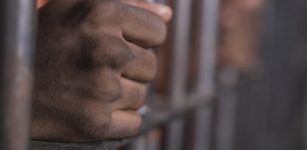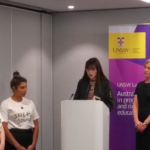Australian Prisons: Dumping Grounds for Mentally Ill Aboriginals

Indigenous people and those suffering from mental health conditions are the most overrepresented groups in Australians prisons today.
Around 38% of inmates in Australia have been diagnosed with a mental illness – and 27% of our prison population is Indigenous. In New South Wales, the proportion of Indigenous inmates has increased by a whopping 18% over the last 12 months alone.
Combine these two risk factors and you have a recipe for disaster: according to a new study published by the UNSW School of Social Sciences, Indigenous people who are also battling mental health conditions are ‘on a train’ to prison.
The Study
The UNSW study is part of the Indigenous Australians with Mental Health Disorders and Cognitive Disability in the Criminal Justice System Project.
It focusses on the experiences of 670 Indigenous inmates – tracking their dealings with police and community services over a 30 year period.
Data obtained from a variety of state resources – including police, courts, legal aid, juvenile justice, prisons and government and community services – was used determine how much it cost to manage a single person – from the time they come into contact with police or emergency services, to the time they are sent to prison.
The findings are astounding – Indigenous people are likely to come into contact with police 3.4 years earlier than non-Indigenous Australians, 2.6 times more likely to be placed in out-of-home care during their childhood, and 2.4 times more likely to find themselves in custody before the age of 18.
The study also found that the costs of managing a single Indigenous person from the time they come into contact with police, to treating them in hospital, to keeping them locked up in custody – amounts to millions of dollars each year. The study found that instead of breaking the cycle by effectively managing and treating these people, the present system fails by preying on their vulnerability and chronic disadvantage.
It found that imprisoning mentally unwell people simply worsens their situation: inadequate access to mental health facilities leaving many languishing in their cells, getting sicker rather than better.
By the time they are ultimately released, such people are more likely to reoffend rather than becoming gainful members of the community.
Doing Things Differently
The study suggested that rather than throwing millions of dollars down the gurgler each year:
“… there would be great human and economic benefit in investing as early as possible in holistic, therapeutic, culturally responsive, community-based support.”
It estimated that the taxpayer could save up to $350,000 per person per year if they instead invested in ‘early intensive case management support services, housing, and a disability support pension.’
Besides the costs savings, this approach has another benefit – it encourages people to reintegrate into the community and thereby reduces crime.
Interactions with Police
An interesting finding of the study was that ‘most Aboriginal people with mental and cognitive disability are not in prison for committing serious crimes.’
Rather, the bulk of inmates are there for minor offences – such as theft, offensive behaviour, resisting arrest, breaching bail, and traffic offences.
The report suggests that a large part of the problem is rooted in a lack of cultural awareness and the confrontational conduct of police who deal with Indigenous people. Those who regularly observe police interactions with mentally ill Indigenous Australians say that police routinely engage in ‘hyper-surveillance’ of these persons – harassing them on the streets and antagonising them to the point where they ‘lose their cool’ and assault police.
The study also noted the massive disparity in spending on police resources in Aboriginal communities compared the small amount spent on support services.
In one small country town where almost 50% of the population are Aboriginal, researchers were astonished to discover that the police station had recently had a $16 million upgrade – including an expansion of police cells – despite there already being 40 police officers in town. Meanwhile, there was a complete lack of mental health services available to Indigenous people in the same community.
Aboriginal leaders said they were not consulted about the huge investment in police resources – and were to receive a response to their submissions on the issue.
Another common theme is the fact that many believe police were ill-equipped to deal with those suffering from mental health problems. As stated in one article:
‘Police often don’t recognise that someone has an intellectual disability or brain injury due to their lack of training in this area. They often assume Aboriginal people are drunk or having a drug-induced mental health episode. This means police don’t respond appropriately, and an interaction can escalate quickly and badly.’
This situation is unsatisfactory given that ‘police are often the first and only service to show up to a crisis involving Aboriginal people with mental and cognitive disabilities.’
It is hoped that the study will shine the spotlight on the problems faced by mentally ill Indigenous Australians in the criminal justice system – and inspire real change.
Receive all of our articles weekly
Author






